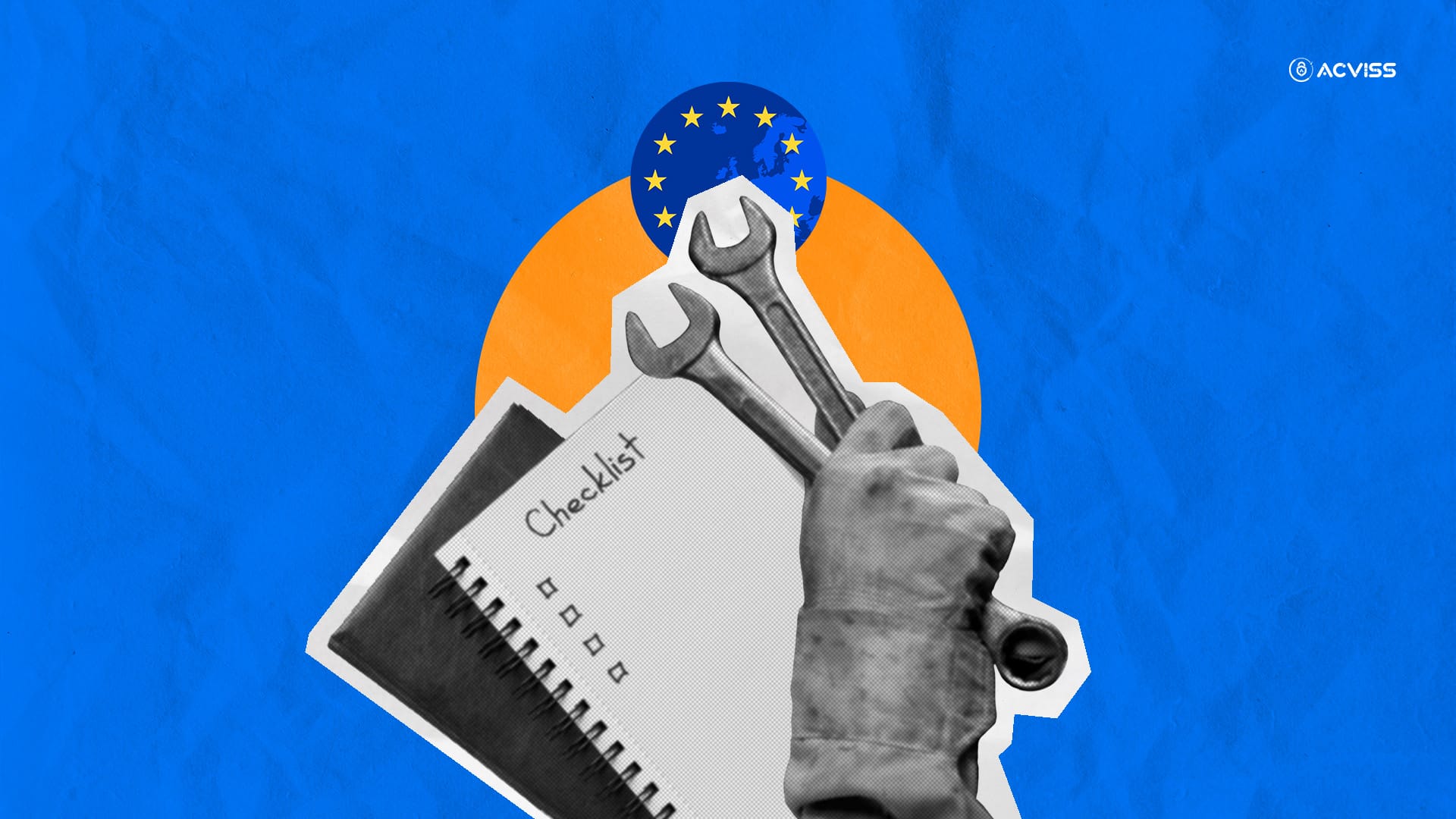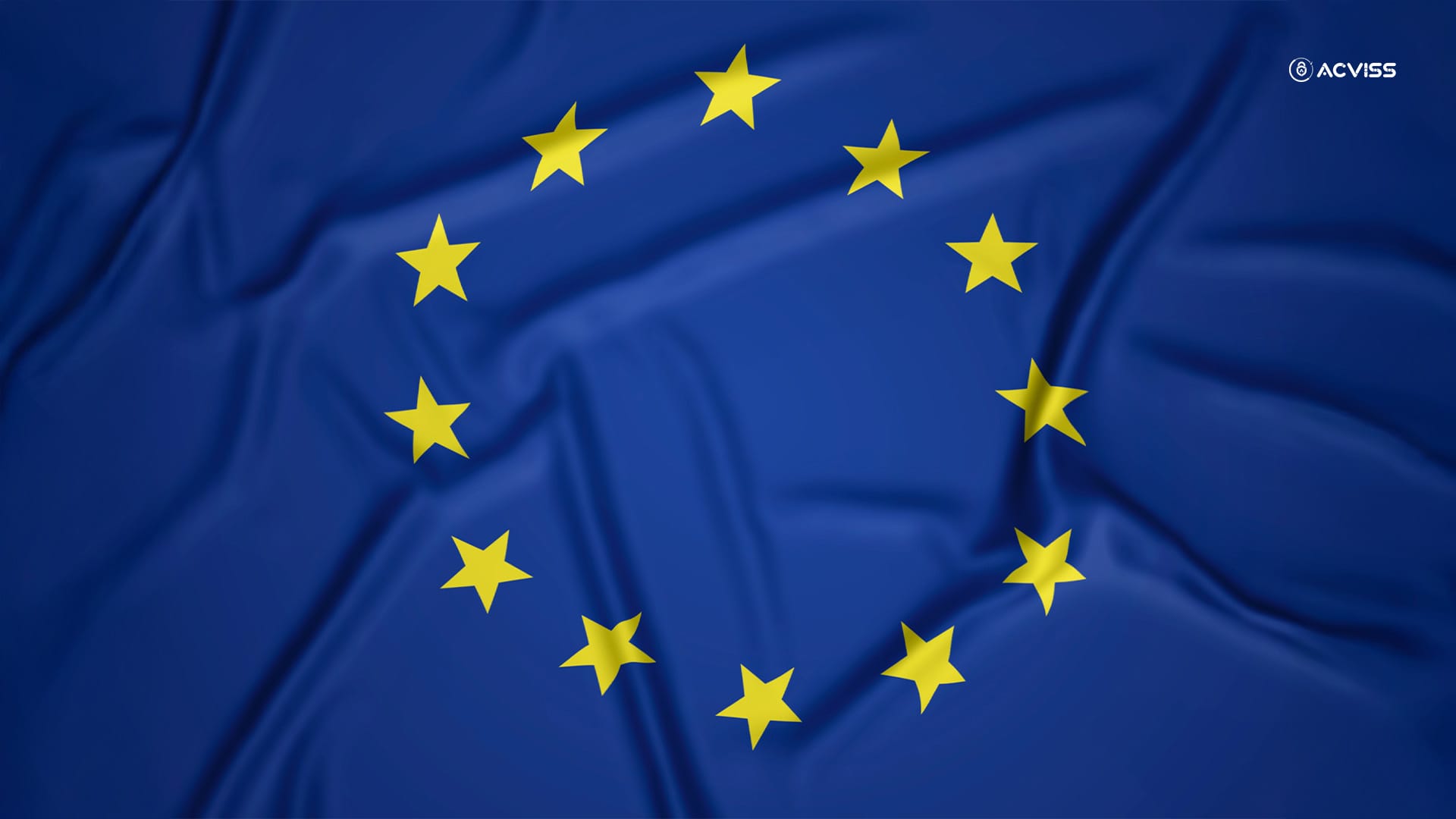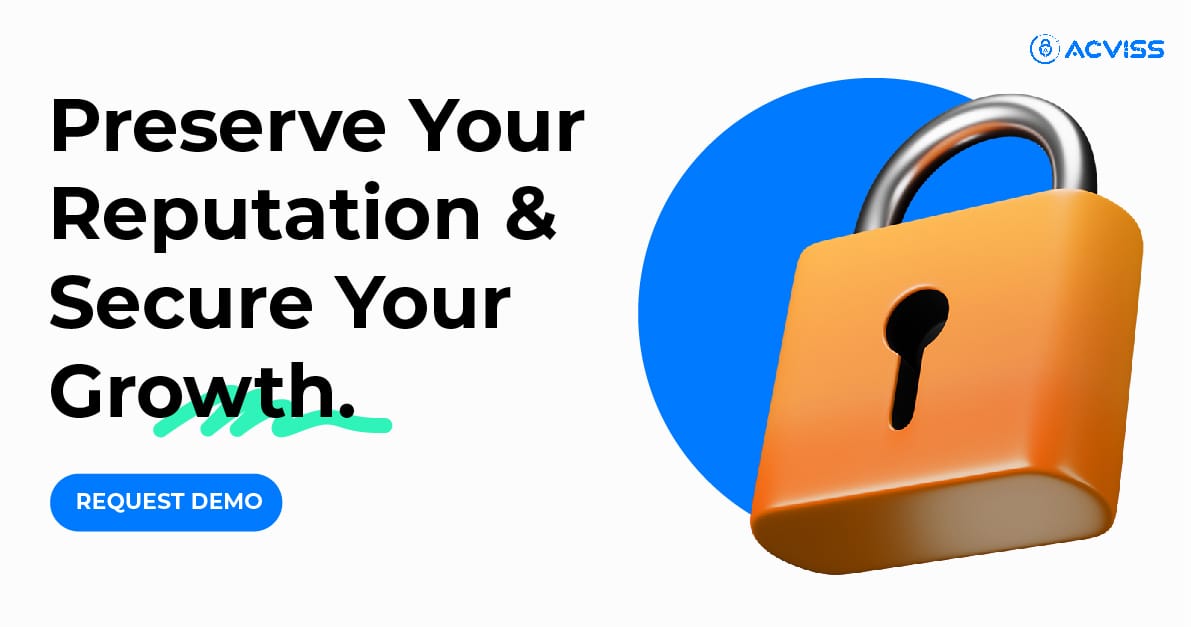A Practical Checklist for Automotive Manufacturers to Ensure EUDR Compliance

Are you prepared to handle the effects of the EU Deforestation Regulation on the automobile sector? As a car manufacturer, you are surely aware that you have to follow EUDR to remain competitive in the EU market. This rule limits the use of commodities like wood, leather, and rubber that are essential to the manufacturing of automobiles. It helps to increase environmental sustainability and lessen deforestation.
Meeting these EUDR requirements is a must if you are exporting to the EU to get market access and preserve a strong, reputable brand. Our compliance checklist is designed just for you! It breaks down the steps to simplify your journey, covering everything from supplier audits and material documentation to traceability.
Ready to get started? Dive into our practical, step-by-step guide for streamlined EUDR compliance!
Before you start implementing compliance measures, let’s quickly cover the essentials of EUDR to make sure you’re clear on what’s involved:
Overview of EUDR
At its core, the EUDR aims to prevent deforestation by regulating imports of materials linked to high deforestation risks. The EU Deforestation Regulation encompasses a variety of materials that play significant roles in industries, especially in automotive manufacturing. These include
- Rubber
- Wood,
- Cocoa,
- Coffee,
- Palm oil,
- Soy,
- Cattle,
And any item made from the commodities listed above.
The Significance of Compliance
Understanding these products is crucial because compliance with EUDR is not just about adhering to regulations. It directly impacts your market access and brand credibility. Maintaining sustainable sourcing for your resources improves your company's image. This also helps to meet more general environmental sustainability objectives.
Serious repercussions may result from noncompliance. This involves monetary fines, restricted access to markets, and serious harm to the company's reputation. In addition to having an adverse effect on your financial performance, breaches destroy the confidence you have gained from stakeholders and customers.
The Individuals Who Must Comply
Manufacturers, suppliers, and exporters are among the numerous parties engaged in the automotive supply chain that depend on such adherence. Every organisation is essential in making sure that the manufacturing materials satisfy EUDR requirements, which eventually helps to create a more sustainable sector.
As an automotive manufacturer, this means you’ll need to ensure your raw materials like rubber, leather, and wood meet EUDR's strict standards, particularly if you source from regions associated with deforestation. Alongside understanding why compliance matters, it’s also essential to grasp the framework that guides it.
Scope and Compliance Framework
The EUDR compliance framework revolves around three essential pillars that you’ll need to incorporate to meet regulatory standards. Here’s a quick breakdown:
1. Documentation of Material Origins
First, it’s all about having solid proof of where your materials come from. You’ll need to gather and maintain detailed records for every item in your supply chain, from rubber and leather to wood. Think of this as the foundation for everything else without clear documentation, proving compliance gets tough. Are you currently keeping all these records in a digital format? If not, this might serve as the best time to consider it.
2. Traceability Across the Entire Supply Chain
Next, you have to track your materials from their source all the way to the final product. With EUDR, there’s no room for unknowns. You’ll need systems that allow you to follow the entire journey of every component. Imagine having a real-time map of your entire supply chain, with tools like blockchain providing that level of visibility. Do you already have tools in place for this? If not, look into solutions that offer robust tracking, like blockchain-based platforms.
3. Due Diligence to Avoid High-Risk Materials
Finally, due diligence requires you to assess each supplier and material for deforestation risks. It’s about ensuring your suppliers aren’t using resources from regions associated with high deforestation. Are you familiar with high-risk areas for your key materials? This pillar is all about verifying that your supply chain is free from red-flag materials that could put your compliance at risk.
Each of these pillars supports a crucial part of the EUDR compliance process, helping you achieve transparency, accountability, and ultimately a more sustainable supply chain.
Compliance Checklist for Automotive Manufacturers

To make sure you meet all of the EUDR criteria, let us start with the practical Regulatory Evaluation while keeping the regulation strategy in mind.
Step 1: Conduct Supplier Audits
Think of supplier audits as your first line of defence against non-compliance. By thoroughly auditing your suppliers, you gain insight into their practices and compliance with EUDR standards.
Why audit? Auditing helps identify potential risks before they impact your supply chain. It ensures suppliers meet EUDR standards, from sourcing to sustainability. During audits, ask your suppliers these critical questions:
- Does the supplier have documented proof of sustainable sourcing?
- Have they undergone third-party audits or certifications?
- Are there records of previous compliance issues or risks?
Example: If you source rubber, confirm that your supplier has certifications proving it’s sustainably harvested.
Key Audit Questions | Importance |
|---|---|
Do you have certifications for material origin? | Confirms that the supplier can trace materials to their source. |
Are you working with certified sub-suppliers? | Verifies that every level of the supply chain aligns with EUDR standards. |
Maintaining correct paperwork is crucial for EUDR compliance in addition to supply checks.
Step 2: Document Material Origins
For EUDR compliance, you’ll need to keep thorough documentation proving the origins of your materials. Proper documentation serves as proof that your materials were sourced sustainably.
Types of documentation
Common documents include certificates of
- Origin,
- Supplier declarations, and
- Environmental compliance certificates.
Best Practices for Documentation:
- Categorise materials by origin and certification status.
- Digitise documents to make data retrieval easier during audits.
- Review records regularly to ensure they remain up-to-date.
To streamline this process, consider implementing a digital document management system. This can help you keep records secure and accessible, making it easier to generate compliance reports.
For example, Storing certificates for leather sourced from EUDR-compliant suppliers in a digital format will ensure it’s available for review whenever needed.
Step 3: Perform Risk Assessments and Risk Mitigation
EUDR compliance risk assessments are required in addition to paperwork. Since not all materials are equally risky under EUDR, it is critical to evaluate and rank them. You may concentrate on high-risk regions and allocate resources more effectively with the aid of risk assessments.
A thorough risk assessment should look at:
- Geographic risk factors: Is the supplier based in a deforestation-prone area?
- Material-specific risks: Does leather sourcing contribute to local environmental harm?
Consider categorising suppliers based on their risk level (e.g., low, medium, and high) and adjusting your compliance focus accordingly. Risk mitigation is crucial after risk assessments. It involves working proactively to resolve any possible compliance problems found during your risk evaluations.
Businesses can lower their exposure to EUDR penalties and guarantee more sustainable sourcing procedures by concentrating on higher-risk areas, such as materials from areas that are prone to deforestation.
Important Methods for Risk Mitigation:
- Supplier Certifications and Audits: Conduct regular inspections and look for third-party certifications to confirm compliance with EUDR regulations for materials like leather or rubber originating from high-risk areas.
- Enhanced Due Diligence: Use sophisticated due diligence procedures, including lab testing or geolocation tracking, to confirm the provenance of commodities and evaluate their effects on the environment.
For instance, if leather comes from an area that has been classified as high-risk, take extra precautions, such as using GPS data to verify the sourcing location, and keep documentation of compliance through recognized certifications.
Step 4: Implement Traceability Systems
Once high-risk materials are identified, the next step is implementing traceability systems to monitor them effectively. Tracking materials across the supply chain is key to maintaining transparency and ensuring that no unauthorised materials slip through. This is where technologies like blockchain shine.
Blockchain solutions, like Origin by Acviss allow you to trace each product's journey in real-time. Origin enables you to verify and document each material’s source through blockchain, giving you an unbroken record of its origin and movement.
How Origin Can Help:
- Real-Time Tracking: Monitor materials from the source to your production line.
- Transparency: Access detailed records that can be shared with stakeholders and auditors.
- Enhanced Security: Ensure your data is tamper-proof, offering a reliable record for compliance reporting.
With blockchain, every transaction or movement of materials is securely documented, creating a “digital passport” for each item. This technology not only boosts transparency but can also serve as proof of compliance.
Step 5: Train and Raise Awareness Among Staff
Achieving EUDR compliance isn’t just a one-off task; it requires company-wide engagement. Your staff needs to understand EUDR requirements and how their roles support compliance.
Training Tips:
- Regular Workshops: Organise sessions that explain EUDR basics and your company’s compliance protocols.
- Role-Specific Training: Tailor training to the specific responsibilities of each department.
- Continuous Updates: Ensure your team stays informed on regulatory changes and new compliance tools.
Effective training reduces errors and builds a compliance culture within your organisation. Consider creating a knowledge hub where employees can access resources on EUDR requirements.
Step 6: Work with EUDR-Compliant and Certified Suppliers
While internal training is crucial, Working with suppliers who are already EUDR-compliant or hold relevant certifications can simplify your compliance journey further. Look for certifications like ISO 14001 (environmental management) or Fairtrade for sustainable practices.
Certified suppliers bring an added layer of credibility, reassuring you and your stakeholders of their commitment to sustainability.
Advantages of Certified Suppliers:
- Assured Quality: Certifications provide a recognised standard for compliance.
- Streamlined Documentation: Certified suppliers are often more prepared for audits.
- Reduced Risk: Their compliance record offers added assurance against EUDR violations.
Partnering with certified suppliers isn’t just about meeting standards; it can also strengthen your brand’s reputation by aligning with sustainability goals.
Now, let’s explore the tools and technologies available to streamline EUDR compliance.
Tools and Technologies for EUDR Compliance
Technology can simplify many aspects of compliance, from tracking materials to documenting supplier credentials. Below is an example checklist of useful tools and technologies:
1. Digital Devices for Compliance Monitoring
Keeping your supply chain transparent is crucial to meeting EUDR requirements. Using blockchain technology, Origin by Acviss solution provides a real-time tracking mechanism. With Origin, you can keep track of each product's path and guarantee complete traceability, providing you with trustworthy, unchangeable documentation.
2. Data Integration and Automation
Automating compliance procedures can cut down on human error and save time. Acviss' Certify effortlessly integrates to verify the authenticity and origin of the goods. Certify helps you swiftly check compliance by using AI and machine learning to make sure that only compliant materials are utilised.
3. Reporting Tools for Sustainability
Adherence to EUDR requires thorough reporting. From tracing the sources of materials to devising risk mitigation techniques, tools such as Origin assist you in producing comprehensive reports. This information is included in your Due Diligence Statement (DDS), ensuring accurate sustainability reporting and proactive compliance management.
Implementing these tools can help you maintain accurate, up-to-date records and demonstrate transparency across your supply chain. Let’s look at some best practices for streamlining your EUDR compliance journey.
Best Practices for Streamlining Compliance in Complex Supply Chain
Integrating compliance measures within your supply chain processes not only reduces risks but also improves efficiency. Here are some practical tips:
- Automate Documentation: Use digital tools to automate data collection and reporting, reducing manual errors.
- Regular Communication: Keep open lines with suppliers and internal teams for updates on compliance standards.
- Schedule Periodic Audits: Regularly audit suppliers to confirm ongoing compliance.
- Encourage Supplier Engagement: Provide resources to help suppliers align with EUDR standards, fostering a compliant ecosystem.
Adopting these practices can create a proactive approach to compliance, allowing you to adapt to any regulatory updates smoothly.
Acviss Solutions for EUDR Compliance
Navigating EUDR compliance can be challenging, but Acviss offers a comprehensive suite of tools tailored to help automakers meet regulatory standards while enhancing supply chain transparency and protecting brand integrity. With our advanced solutions, you can streamline compliance processes, track product origins, and secure your supply chain from end to end.
Overview of Acviss Tools and Services
Technology | Description |
|---|---|
Blockchain-based track-and-trace solution providing real-time product insights, full transparency, and immutable records to ensure EUDR compliance. | |
Product authentication tool to verify product origins and prevent counterfeiting | |
Online brand protection solution that monitors web and social media for counterfeit products or unauthorised brand use. | |
Tamper-proof, non-cloneable labels to secure products and prevent tampering. |
Case Study: Ensuring Compliance and Brand Safety
A leading agriscience company turned to Acviss when it faced growing challenges with counterfeiting and supply chain risks. Implementing the Acviss Origin solution helped them achieve enhanced traceability for their materials and reduced counterfeit threats in their product line.
The result? Improved brand integrity, a stronger compliance record, and increased customer trust. This success highlights the effectiveness of Acviss tools in safeguarding both operational efficiency and regulatory compliance.
Ready to Streamline Your EUDR Compliance? With Acviss, you’re equipped to meet EUDR requirements with confidence and efficiency.
Building Trust in Supply Chain
Complying with EUDR might seem challenging, but with a structured approach, you can manage it efficiently. Use this checklist to guide your compliance efforts, from supplier audits to traceability systems, and take advantage of technology solutions like Origin by Acviss to simplify tracking and documentation. In an industry moving toward a greener future, your commitment to EUDR compliance strengthens your brand and builds trust with EU markets.
Interested to learn more about EUDR and getting compliant? Get in touch with us today and join the ranks of global leaders in upholding a safe and sustainable supply chain for your supply chain safe and sustainable for long-term growth.

